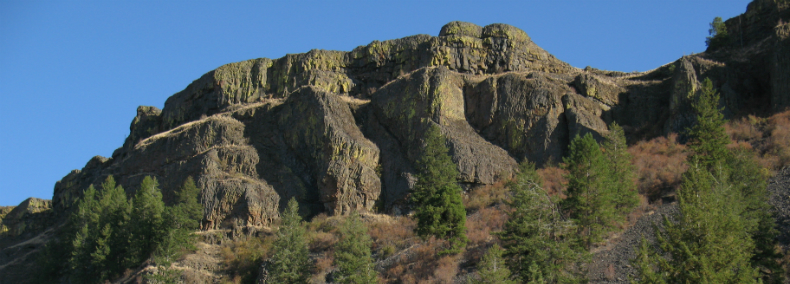Castle Rock Natural Area Preserve

On this preserve, dramatic basalt cliffs, canyons and tabletop mesas support unusually well preserved examples of eastern Washington's shrub speckled grasslands known as shrub-steppe. A diversity in soil and habitats on the preserve provide sites for six distinct plant communities identified in the State of Washington Natural Heritage Plan. Threetip sage brush, big sagebrush, bluebunch wheatgrass, needle-and-threadgrass, and Idaho fescue are the main species represented in these habitats. On top of the castle, alkali-tolerant wildflowers and grasses grow in bands around a shallow, seasonal (vernal) pond which gradually dries up during summer.
Features Protected: Threetip sagebrush/bluebunch wheatgrass plant community, threetip sagebrush/needle-and-threadgrass plant community, threetip sagebrush/Idaho fescue plant community, big sagebrush/needle-and-threadgrass plant community, big sagebrush/bluebunch wheatgrass plant community, thyme-leaved buckwheat/Sandberg bluegrass plant community, and three vernal ponds.
Ecoregion: Columbia Plateau (Grant County)
Ecoregion: Columbia Plateau (Grant County)
Science, Research and Monitoring
Public and private universities, other research institutions and individual researchers may contact DNR to propose a research project at the site. If you are interested in pursuing research at Castle Rock NAP, please contact David Wilderman, natural areas ecologist, at david.wilderman@dnr.wa.gov.
Environmental Education and Public Access
Currently no formal educational programs are available at Castle Rock NAP. The site is not ADA accessible and facilities are not available. For more information, contact the DNR Southeast Region natural areas manager.

